 |
Clifton Rugby Football Club History |
|
|||||
|
Friedrich Wilhelm Bartelt |
|||||||
ADVERTISE ON THIS WEBSITE |
Home Founders Benefactors Famous Players Famous Matches Grounds War Memorial In Print Statistics Other Sports Info B In Memoriam |
1860s 1870s 1880s 1890s 1900s 1910s 1920s 1930s 1940s 1950s 1960s 1970s 1980s 1990s 2000s B List of Club Members 1872-1945 B Club Statistics 1872-2011 |
![]()
Captain Friedrich Wilhelm Bartelt - Regiment: Somerset Light Infantry (2/4th Battalion). Born in September 23rd, 1887 in Corston, Somerset. Died on 11th September 1916 from food poisoning in Calcutta. Body was repatriated and buried in Corston (All Saints) Churchyard, Somerset. He was part of a Prussian family and it appears that because of this he was posted away from the main war zone. His name is sometimes spelt Bartlett.
His father was Friedrich Ludwig Bartelt, born on 29th May 1852 in Stettin, Prussia. He died at the age of 72 on August 5th, 1924 in Corston Lodge, Corston, Somerset. His mother was Rosanna or Rose Mary Hodgson was born on March 28th, 1857. She died at the age of 64 on January 8th, 1922. He left a wife Gertrude H. Bartelt and two small children, Richard and Peter. His father founded the Polysulphin Company first in Brislington and then at Keynsham, manufacturing soap for laundries. The firm was sold around 1965. The factory was sited by the river, accessed from what is now the Keymarket roundabout at the end of the Keynsham by-pass. For some reason the offices were the other side of the river, in what is now Matthews, next door to Portavon Marina. The premises constantly flooded and the stock washed away.
This family tree is being put together by relatives at http://www.beath.net/tree/index.html

Above his parents, Friedrich Ludwig Bartelt and Rosanna, from the 1894 family photo album.

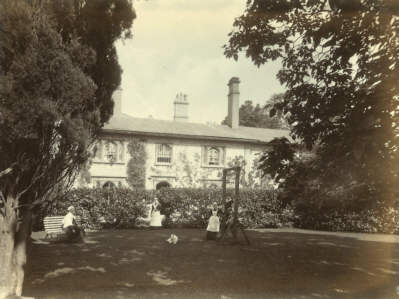
Above the Bartelt family home, Corston Lodge, from the 1894 family photo album.
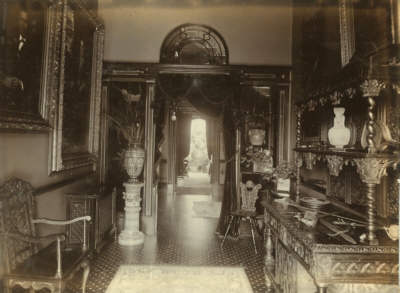

Above the inside of the Bartelt family home, Corston Lodge, from the 1894 family photo album. Left Hall, right library.

Above the Bartelt family, from the 1894 family photo album. A 7 year old Friedrich Wilhelm Bartelt with his mother, father and sister Amy.
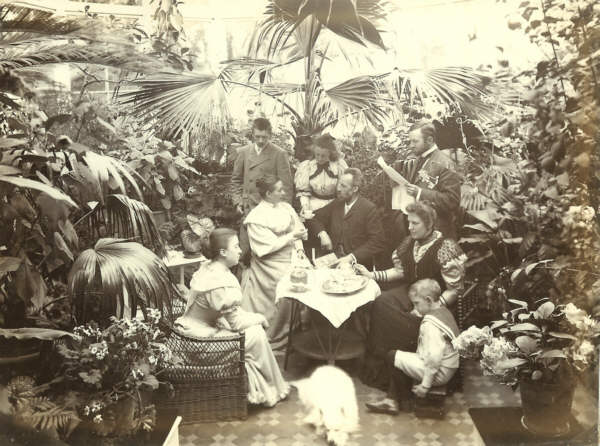
Above the Bartelt family, with a 7 year old Friedrich Wilhelm Bartelt in a sailor's outfit. From the 1894 family photo album.

Above FB on left as a boy
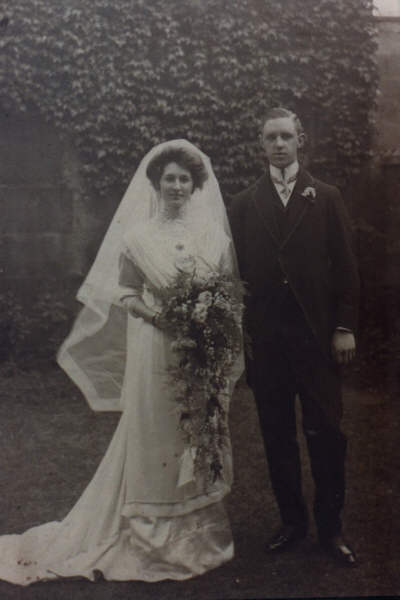
Above Friedrich Bartelt on wedding day at Bathwick Hill, Bath.

Above FB on right with father, Friederich Ludwig Bartelt, in middle and his father-in-law Ivo Peters from Hanover on the left.
On February 15th 1911 he resigned his Leiutenants commission from the 4th Prince Albert's (Somerset Light Infantry)

Above a Christmas Card from the Bartelt family in 1911.

Above family photo

Above Bartelt with his in-laws outside 8 Bathwick Hill, Bath in September 1912.
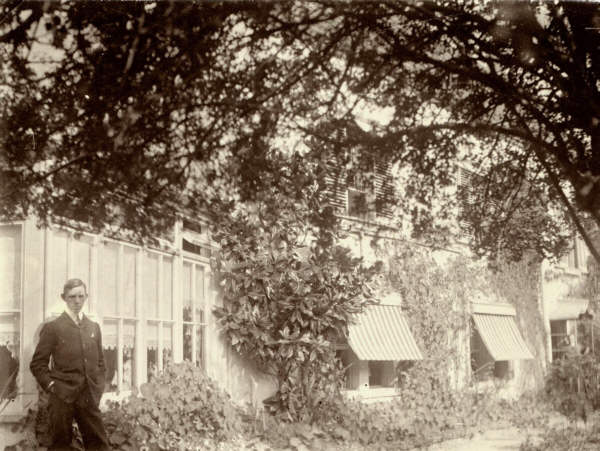
Bartelt outside Cottage.

Above top left: Friedrich Bartelt with son (Peter) at Hill House Temple.
At the outbreak of the war there were a considerable number of British Regular troops stationed in India, who, after the retreat from Mons and the subsequent fighting on the Marne and the Aisne, were sorely needed to replace the growing casualties amongst the original BEF in France.
It was, however, undesirable to denude the country of regular troops and, although those regiments eventually sent to France and then to Mesopotamia were to a large extent replaced by Territorial and garrison troops from England, yet the Government was forced to retain in India during the whole course of the war British and Indian Regulars.
Amongst the eight infantry battalions of British troops retained was the 2nd Battalion of the Somerset Light Infantry.
For the 2nd Somersets this was a bitter disappointment - keeping fit in training but doing little more than garrison duty whilst their comrades in the 1st Battalion were fighting hard in Europe. The 2nd Battalion in India consisted of 23 officers (amongst whom F.W. Bartelt) and 884 other ranks.

Above with fellow officers in India 2nd right.

Above with fellow officers in India middle.
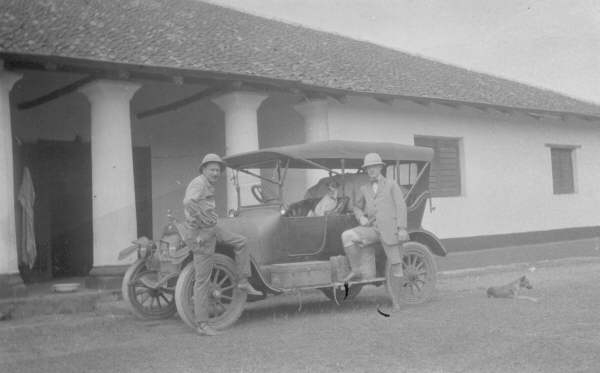
Above Friedrich Bartelt in sidecar in India. Other officer is called Elliot.

Above Friedrich Bartelt right at Clerks House, Burares, India with S.Playne.
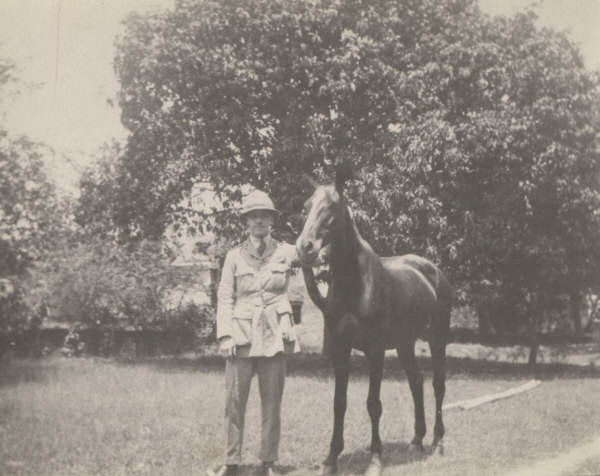
Above Friedrich Bartelt with his horse Jaff in Baranthapur, India

Above Wall Bungalow Bagoda, India. Friedrich Bartelt on the right. The caption reads "Where we spent the first night".

In India. Car with puncture
He died on 11th September 1916 from food poisoning in Calcutta. His body was repatriated and buried in Corston (All Saints) Churchyard, Somerset.
On September 15th 1916 he was listed in The Times as Killed in Action. It said
BARTELT.- On the 12th inst., abroad, CAPTAIN F. W. BARTELT, Somerset L.I., the only and dearly beloved son of F.L.Bartelt J.P., County Somerset, and Mrs Bartelt, of Corston Lodge, near Bristol, and dearly beloved husband of Gertrude Helen Bartelt of Hill House, Corston, passed peacefully away, after several weeks illness in his 29th year.
in the same paper it also said
Captain F. W. Bartelt, Somerset Light Infantry, only son of Mr F L Bartelt of Corston Lodge near Bristol, died in hospital abroad on September 12th in his 29th year. He was educated at St Christopher's Bath and Bath College (1900-04). He was in the College Rugby XV and a member of the cricket X1 and was in the second rowing four. When he left college he went to Bristol University. Directly after he left school he joined the old 1st Battalion V.B. Somerset Light Infantry in which he held a commission, retiring in 1911. When war broke out Captain Bartelt rejoined his regiment. Captain Bartelt, who was engaged in business with his father, married a daughter of Mr Robert Isgar of Mendip Lodge, Bathwick.

Above: All Saints Church in Corston. Under a memorial window in the South wall of the Church are the ashes of Capt. Bartelt. They were joined by the ashes of his wife and eldest son Richard when they died. His youngest son Peter died in 2003. Sadly there was no room for his ashes to join the rest of the family so his ashes are buried in the family plot outside the West door. Friedrich Bartelts name appears on the memorial although his ashes are in the church.
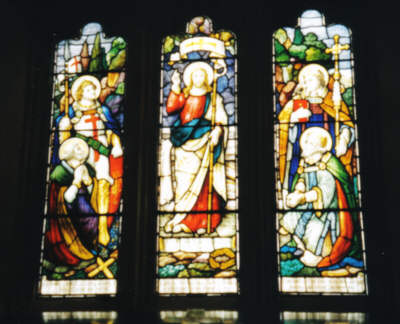
Above Bartelt Memorial Window at All Saints Church, Corston.

Above bronze plaque on cask containing remains of Friedrich Bartelt at All Saints Church, Corston.
The Corston Church Bells. In 1754 there were three bells known as 'Ye Great, Ye Least and Ye Other'. In that year Ye Great and Ye Least were recast into one single bell by the Bilbies, the famous bellfounders of Chew Stoke. Ye Other was sold in 1823 and it seems that Corston has only the one Bilbie bell until 1917. In that year Mr F. L. Bartelt presented the set of eight bells in use today. A condition, honoured to this day, was that the bells be rung every year on September 23rd, the birthday of Fritz Bartelt in whose memory they were given. As records in the ringing chamber shew, Corston bells and bellringers now take their full share in making the bells of Somerset famous throughout the world.'

Above Corston Church from the 1894 family photo album.

Above the Bartelt Peters Memorial at Corston.
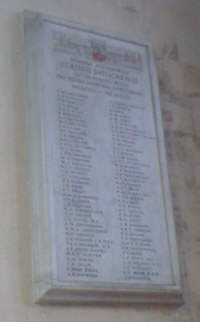
Above the Bath College Memorial in Bath Abbey with Bartelt's name as well as A.E.J.Collins.

Above Polysulphin Works in Keynsham where the Bartelt business was based.

Above a 1919 map of the Keynsham area with the Polysulphin Works marked SoapWks north east of Keynsham.
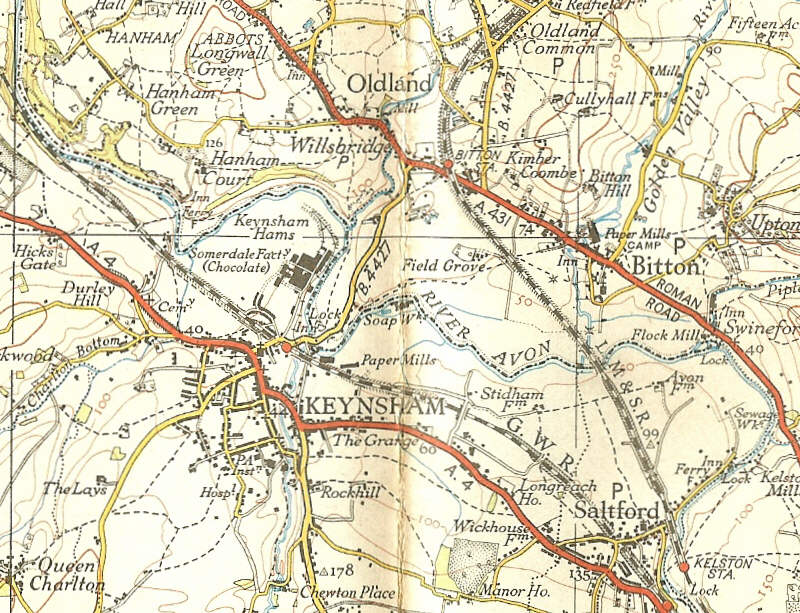
Above a 1937 map of the area with the Soap Works in the centre.